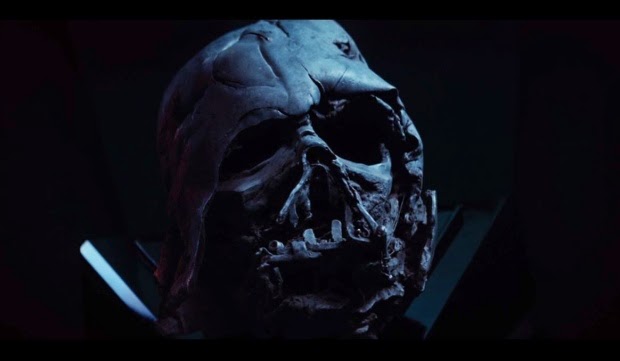Lucasfilm just released the highly anticipated second trailer for the new
Star Wars film,
The Force Awakens. I'm a huge
Star Wars fan, so I'll go ahead and break down the trailer shot for shot.
The first shot is of a desert planet that is reminiscent of Tatooine, but is apparently actually a planet called Jakku that has not been featured in any
Star Wars media previously. This might be a sign that Tatooine is not in the movie at all. I'm okay with this as shoehorning the planet into every episode isn't a good idea. Adding new planets is always good as well, I wouldn't want to just be returning to previously seen planets.
It pans to the left and we see a crashed X-Wing, and then a massive Star Destroyer that has crashed as well. This is a really cool shot and feels like classic Star Wars. Clearly the effects of the war between the Empire and Rebellion are still being felt.
Then we hear the voice of Luke, who was absent from the first trailer. The dialogue is taken from Return of the Jedi, and he says 'The force is strong in my family."
We then cut to a shot of Darth Vader's helmet which has been badly burnt. This makes sense as his suit was burnt by Luke in Episode 6. However, it does seem a bit odd that someone fished his helmet out of the funeral pyre, but perhaps it makes sense in context. Regardless, it makes for a cool visual and is yet another clear sign of the connection to previous films in the saga. Over the shot, there is Luke continuing, "My father has it... I have it."
At this point, we are graced with our first shot of R2-D2. Next to the droid is a figure clad in a black robe with a white sleeve underneath. This person also has a visibly mechanical hand. Presumably this is Luke. If so, I think his outfit is fitting.
Luke goes on, "My sister has it," and there's a shot of a lightsaber being passed from one hand to another. We can assume one of the pairs of hands belongs to Leia. Hopefully, this is indication that she is a Jedi in this trilogy as was implied by
Return of the Jedi.
Then he says, "You have that power, too." The clear implication is that he is speaking to someone related to him who is strong in the force. Whether this is his child or Leia and Han's is unclear. I really hope that Luke has offspring, whether it be male or female.
Then we get some X-Wings flying over water in what is probably from the same sequence shown in the first trailer. Oscar Isaac is shown in the cockpit as his character Poe Dameron. It's great seeing the X-Wings back in action again.
Next, there's a very quick, but visually impressive shot of villain Kylo Ren swinging his interestingly designed red lightsaber, followed by another short clip of Daisy Ridley and John Boyega running from an explosion in the desert as Rey and Finn.
After that, they chose a close up of Kylo Ren's mask with him in the classic "using the force" posture. His character is design is really cool and he is one of the most intriguing parts of the trailer.
There's a shot of some updated Stormtroopers, TIE Fighters blowing up, and Finn taking off his helmet as a Stormtrooper.
We also get a quick peek at the "Chrome Trooper" design. The character is rumored to be portrayed by Gwendoline Christie of Game of Thrones. I'm not too sure how I feel about the shiny armor, but I will wait to see how it looks in the final film.
Following that is an adorable shot of the robot BB-8 poking his head around the corner.
One of the coolest parts is easily seeing the Millenium Falcon in action again being chased by some TIE Fighters. Some may say it's just fanservice, but isn't that what this movie is all about?
At then, the climactic shot of the trailer. At first, we just hear Harrison Ford say, "Chewie." Then we see none other than Han Solo and Chewbacca in the interior of the Falcon. This is the first clear shot we get of any of the main characters from the original trilogy, and it is plain awesome.
The only weird thing about the shot is that Chewbacca seems to be kind of awkwardly holding up his crossbow. This doesn't seem to match Han's demeanor as he doesn't seem to be in any sort of danger. However, again like many other comments I made, this may make more sense in the final film.
Overall, I am very pleased with the trailer. It really seems like they are getting the tone of
Star Wars right. I kind of wish they had shown a bit more, but they are obviously trying to keep thing under wraps. Neither of the trailers has really given any indication as to what the plot will be.













































